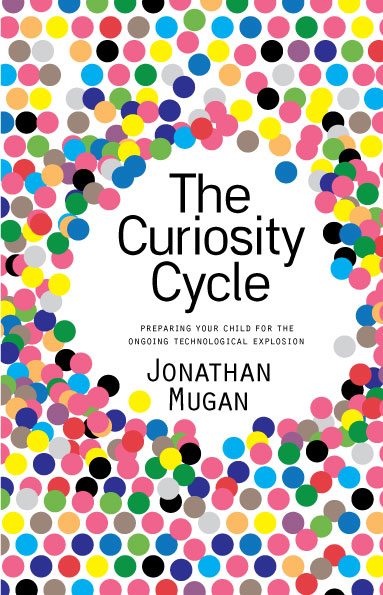
curiosity cycle The learning process that consists of individuating concepts, using those concepts to build models, and testing models. We all have multiple curiosity cycles going at once, and the product of these curiosity cycles is a web of knowledge. Natural curiosity makes the cycles go around, and the cycles also add to curiosity.
One of our jobs as parents is to keep our kids learning, keeping them curious about the world and adapting to changes in society. This is actually not difficult to do, but it does take effort, and learning about how kids learn is extremely helpful for this task.
Now in its second edition, The Curiosity Cycle will help you accomplish this. Author Jonathan Mugan is a fantastic writer who paints a picture of how our brain works. How do you keep kids wanting to learn? If you make sure they are continually curious, you’ve nothing to worry about. Curious kids are always in search of answers, and explore to satiate their curiosity.
A fascinating and relatively quick read, the book’s premise is that you need to understand how kids learn and grow to nurture and create curiosity in them. Kids build on incomplete models of the world inside their head, and then the knowledge gained is put into a web of knowledge. This then connects all of the complete and incomplete models to the information that kids already know. This is how all people build on existing knowledge, where new bits of information can be integrated into the existing web. Kids can then use their models to predict what will happen in the future. Even incorrect models are helpful. It’s like the scientific method… in your mind.
It’s uncanny how this book so accurately describes my own experience of how I learn, and how my kids learn when I teach them while we homeschool. When we learn about something, even if we don’t remember everything, we give ourselves context for learning about that particular thing or related things later. Our curiosity will drive us to fill the holes in our knowledge, and the same will happen with our kids. Learning isn’t about memorization; it’s about knowing things within the context of everything else we know.
The Curiosity Cycle goes into depth on topics such as learning new concepts; using problem solving to learn; using the information and tools all around us; how children’s physical, mental, and social development affect their learning; and what computers teach us about thinking and learning. The end of the book goes into how you can prepare your child for dealing with and handling the power of our computer-based society. Each chapter ends with a list of ways to get started on implementing that chapter’s concepts.
The back matter of the book includes a list of useful media resources–such as books, games, websites, and more–that will pique children’s interest and keep them thinking logically and critically. It also includes an index and extensive bibliography (which can also be used as a handy “further reading” list for those especially interested in this topic).
Throughout the book, Mugan puts into words things that we experience every day, such as learning a new word and then all of a sudden seeing it everywhere. He promotes thinking for one’s self and critically thinking about what we encounter every day. Don’t just react to what you see. Think about it, learn from it, and use that knowledge to improve your future actions.
The book overflows with informative bites that you will want to quote to everyone you know. If you’re at all interested in learning, education, child development, or even how adults learn and think, The Curiosity Cycle is a must read.
A digital copy of the book was provided for review purposes.



